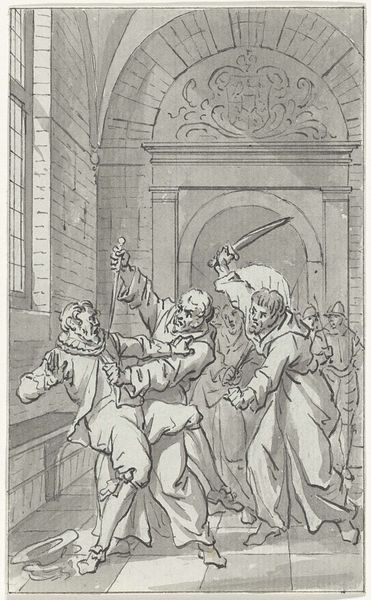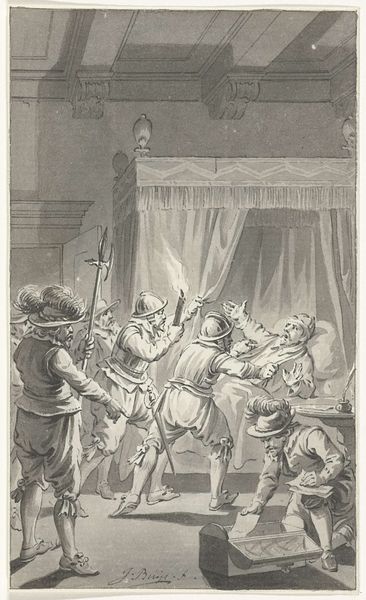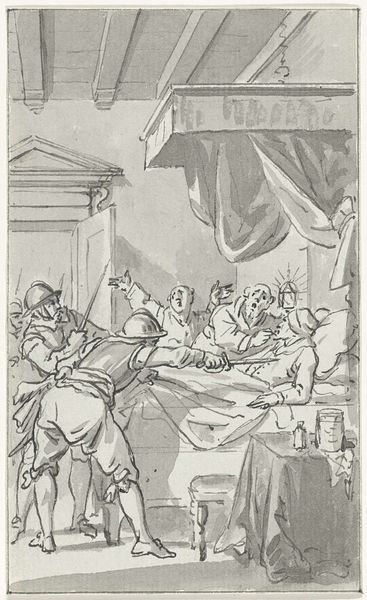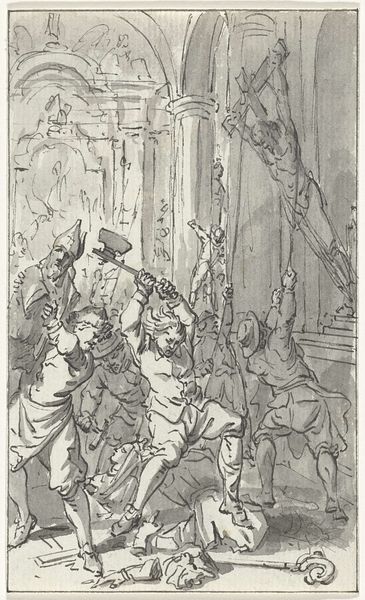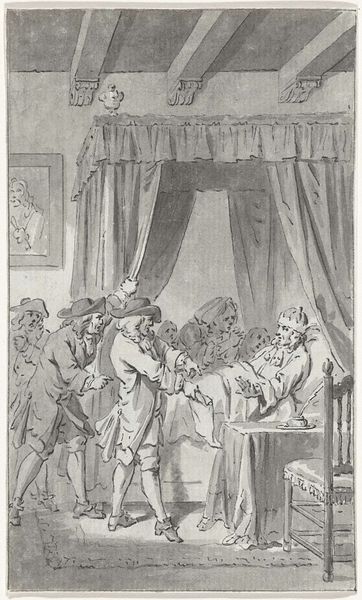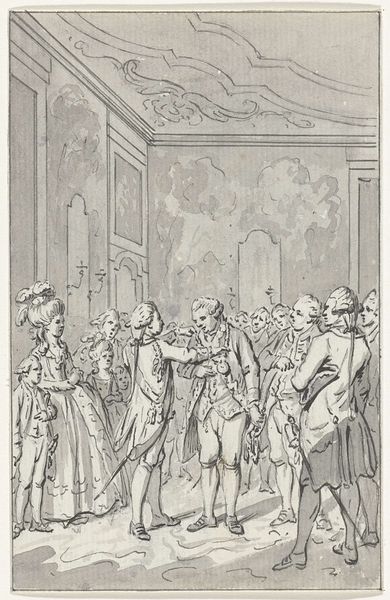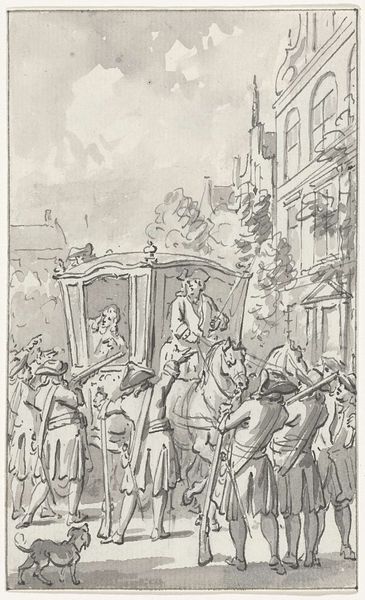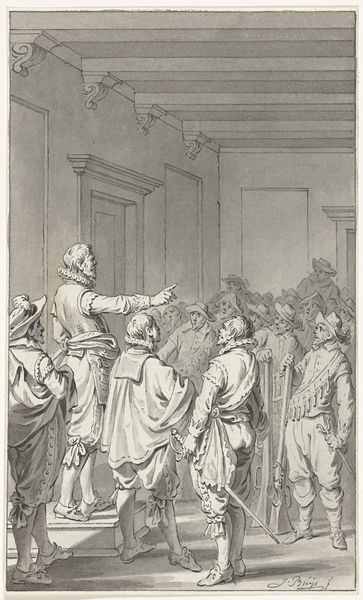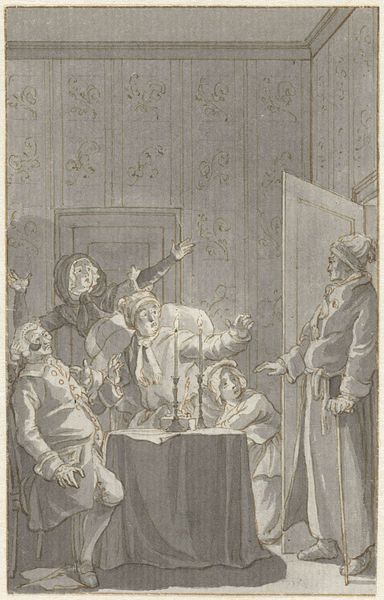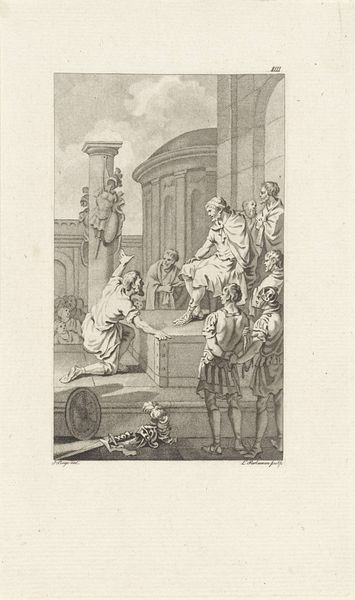
De arrestatie van Paulus Buis, pensionaris van Utrecht, 19 juli 1586 1785 - 1787
0:00
0:00
jacobusbuys
Rijksmuseum
drawing, ink, pen
#
drawing
#
narrative-art
#
pen illustration
#
figuration
#
ink
#
sketchwork
#
line
#
pen
#
genre-painting
#
history-painting
#
academic-art
#
realism
Dimensions: height 149 mm, width 89 mm
Copyright: Rijks Museum: Open Domain
Editor: Here we have Jacobus Buys' drawing, "The Arrest of Paulus Buis, Pensionary of Utrecht, July 19, 1586," created between 1785 and 1787, using pen and ink. It strikes me as incredibly dramatic; the figures are so active and expressive. How do you interpret this work, especially considering it was made so long after the actual event? Curator: It's crucial to understand that Buys, though depicting a historical event, was creating this drawing in the late 18th century. That places him squarely within a burgeoning sense of national identity and a need to visually represent key moments in Dutch history. What narrative does this 'arrest' present to its intended public? Editor: Well, the focus on Paulus Buis being taken from his bed suggests a violation of personal space and perhaps even a betrayal of justice. Curator: Precisely. Think about the public perception Buys is cultivating. By depicting this arrest so vividly, complete with the grasping figures and Buis' apparent distress, he participates in shaping a narrative of injustice and potential resistance to authority, long after the events unfolded. The inclusion of figures searching for documents also feeds into the perceived threat to political freedom. Editor: So, the drama is intentional, designed to evoke strong emotions related to political ideals in his own time? Curator: Absolutely. Consider who would have viewed this. The Rijksmuseum's collection indicates Buys catered to a market interested in the dramatic recreation of a national narrative, shaping public memory and political sentiment. How might seeing this have affected their sense of Dutch identity? Editor: I hadn't considered the artwork's role in forming that sense of national identity so long after the actual event. Thanks for pointing that out! Curator: Indeed. Art serves not only as a historical record but as a powerful tool in the construction and negotiation of cultural values. It is important to look for those values when we see work depicting narrative or historical scenes.
Comments
No comments
Be the first to comment and join the conversation on the ultimate creative platform.

